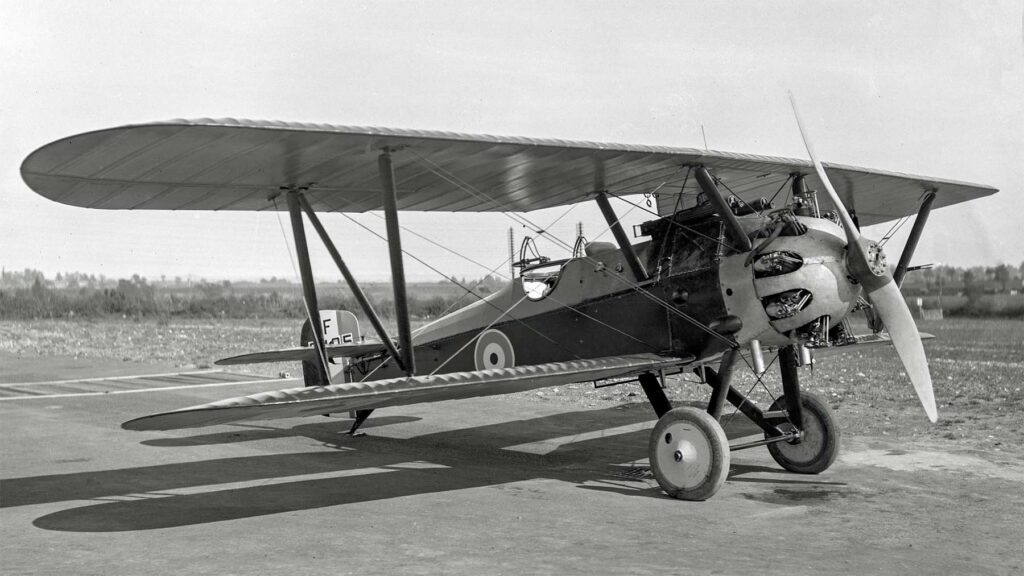Bristol Badger: Early 1920s British biplane, armored for ground-attack roles, twin-seater with one engine, short-lived service. The Bristol Badger represents an early foray into specialized ground-attack aircraft during a period of military aviation focused on expanding roles and capabilities. While its operational history was limited, the Badger was a response to the need for a durable, armor-protected plane capable of close air support.
In the nascent days of military aviation, the end of World War I left many manufacturers and militaries pondering the future of aircraft in combat. The Bristol Aeroplane Company, known for its pioneering designs, introduced the Bristol Badger, an aircraft intended to serve as an armored ground-attack biplane, a concept that was gaining traction in the early 1920s.
History of the Development of the Bristol Badger
Following the end of World War I, there was a notable shift in military strategies and the perceived role of aircraft. Combat had revealed the potential effectiveness of specialized aircraft in ground-attack roles, providing direct support to infantry and armored units. This evolution led to the development of the Bristol Badger, conceptualized to meet the British Air Ministry’s requirements for an aircraft that could withstand ground fire while delivering substantial firepower.
The program, initiated by the Bristol Aeroplane Company, saw Frank Barnwell, the company’s chief designer, spearheading the project. The objective was to create an armored, durable aircraft with sufficient agility and firepower to engage in close support missions. In 1922, the prototype of the Bristol Badger made its maiden flight, aiming to demonstrate its suitability for the challenging role it was designed for.
The need for such an aircraft stemmed from the experiences of World War I, where trench warfare dominated, and the use of aircraft evolved rapidly from reconnaissance to offensive roles. The Badger was a product of its time, reflecting the military’s anticipation of future conflicts where air-to-ground support would be crucial.
Design of the Bristol Badger
The Bristol Badger was a two-seat biplane with a conventional wood and fabric construction, featuring armored plating around critical areas to protect it and its crew from ground fire. The aircraft’s design included a single engine, a notable aspect of the design philosophy focusing on reliability and maintenance simplicity.
The Badger had a wingspan of approximately 39 feet (11.89 meters) and a length of 29 feet (8.84 meters), dimensions that were typical for the era’s ground-attack aircraft. It featured a fixed landing gear, which was standard for the period, and a robust fuselage to house the armor and armaments.
The armor plating was both an advantage and a drawback. It provided the pilot and critical components with protection from small arms fire, a significant advantage in the low-altitude strafing runs expected of the aircraft. However, the added weight from the armor reduced the aircraft’s overall performance, particularly its speed and maneuverability. This trade-off was a central challenge for designers of armored aircraft during this period.

Performance of the Bristol Badger
The Bristol Badger was powered by a single Rolls-Royce Falcon III engine, producing around 275 horsepower. The powerplant was a reliable choice, but the aircraft’s performance was hindered by the weight of its armor. The Badger’s top speed was modest for its time, and while exact performance figures are sparse, it would have been outpaced by unarmored contemporaries.
In terms of altitude and range, the aircraft could operate effectively at the low altitudes necessary for its ground-attack role, but the heavy armor impacted its operational ceiling and range, limiting its versatility.
Military Use and Combat of the Bristol Badger
The Bristol Badger, while innovative, saw limited use in military operations. Its role as an armored ground-attack aircraft was a new concept that did not see extensive implementation in the post-war period. The armament likely consisted of machine guns suited for strafing, and possibly light bombs for use against ground targets.
The aircraft did not see combat, as it arrived during a time of military downsizing and budget cuts, which limited the opportunity for new military concepts to be tested in the field. No significant sales to other countries were recorded, and the Badger did not enter mass production. It was replaced by more advanced and versatile aircraft as military doctrines and technology progressed.
The Bristol Badger was a forward-thinking design that attempted to address the evolving needs of military aviation in the aftermath of World War I. While it did not see widespread use or combat, the concepts it introduced – particularly armored protection for ground-attack aircraft – would influence future designs in military aviation. Its development underscored the challenges of balancing armor with performance, a consideration that remains relevant in aircraft design today.
Back to the Warbirds section.